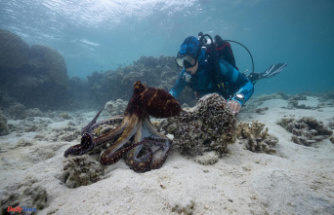In spring they appear in local parks, in the warm summer months more and more take to the skies on the beach and in autumn they prance over large meadows: kites are popular flying objects that inspire children and adults alike. Accordingly, there is a large selection of different models that are suitable for different age groups and wind speeds. Before you want to let your child fly a kite, you should consider the following information.
A distinction is made between the following dragon types:
Single lines have only one line and take off even in light winds, but they cannot really be steered. They are therefore a good start for (small) children and beginners. And the selection of suitable models is almost endless. Here are a few nice examples of single-liners:
Two-liners have two cords and are therefore automatically more steerable - but they also require significantly more skill and are therefore more suitable for older children. Real kite professionals even take on four-line kites. Here are two nice examples of children's kites:
Stunt kites are the same as two-line or four-line: These models can be steered through the multiple cords on the outside and – the more skillful you are – you can also do great tricks like twisting or loopings in the air. They usually have a triangular shape and are therefore particularly manoeuvrable. Here are three nice examples of stunt kites:
Another important tip: The more lines a kite has, the faster it flies and the more difficult it is to steer.
Before you fly a kite with your child, you should consider the following points:
First find a large meadow, an open field or an empty stretch of beach before your dragon takes off. There should be no railway tracks, roads or buildings within 600 meters.
Pay attention to the wind direction so that your flying object can take off. It is best to stand with your back to the wind. Keep the kite flat on the ground with its nose pointing into the wind.
As fun as it is to fly a kite, the high-flying hobby also involves risks. For this reason, you should observe the following safety instructions:
Keep your distance Always make sure that there are no power poles or power lines in your immediate vicinity. The steering line can conduct electricity, which is why you should never fly a kite during a thunderstorm. Also, keep your distance from trees, other people and airports.
Minimize risk of injuryWhile a kite is in the air, there is a great deal of tension on the lines - in the worst case this can lead to painful cuts. Therefore, you should always make sure that your child does not walk under the trajectory or the kite. Be considerate of other people and do not steer your single or double liner too low.
Check Wind ForceIf you want to fly a kite, you need wind. Not too much, but not too little either - it should be strong enough to keep the flying object in the air, but weak enough for your child to still be able to steer the kite on their own. It is best to start with a single line and always check the wind speed before the first attempt.
One last tip: there are numerous apps that can predict the wind speed for you every day - and this information is usually updated regularly on the websites of the local weather services.
This article contains so-called affiliate links. There is more information here.












